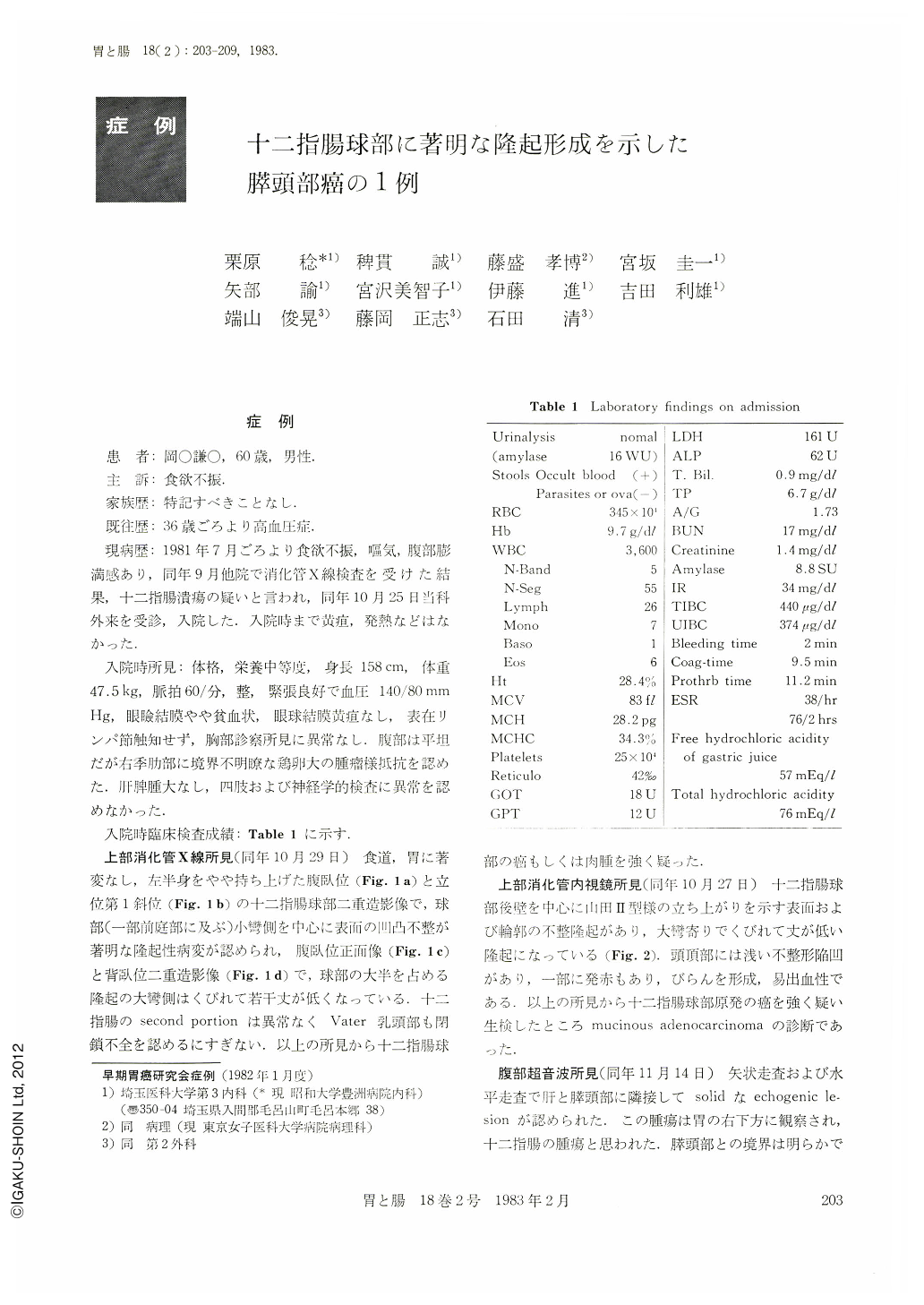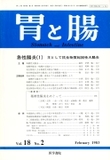Japanese
English
- 有料閲覧
- Abstract 文献概要
- 1ページ目 Look Inside
症例
患者:岡○謙○,60歳,男性.
主訴:食欲不振.
家族歴:特記すべきことなし.
既往歴:36歳ごろより高血圧症.
現病歴;1981年7月ごろより食欲不振,嘔気,腹部膨満感あり,同年9月他院で消化管X線検査を受けた結果,十二指腸潰瘍の疑いと言われ,同年10月25日当科外来を受診,入院した.入院時まで黄疸,発熱などはなかった.
入院時所見:体格,栄養中等度,身長158cm,体重47.5kg,脈拍60/分,整,緊張良好で血圧140/80mmHg,眼瞼結膜やや貧血状,眼球結膜黄疸なし,表在リンパ節触知せず,胸部診察所見に異常なし.腹部は平坦だが右季肋部に境界不明瞭な鶏卵大の腫瘤様抵抗を認めた.肝脾腫大なし,四肢および神経学的検査に異常を認めなかった.
A 60-year-old man had been complaining of loss of appetite, nausea and abdominal distention for four months. He was first seen at our clinic on Oct. 25, 1981. An irregular tumours resistance with obscure margine measuring arround 6×4 cm was recognized in right hypochondric region. Other physical examinations were normal. Slight anemia was recognized. Erythrocyte sedimentation rate was 38 mm in one hour. Other laboratory tests were within normal limits.
Upper gastrointestinal roentgenograms and duodenal fiberscopy demonstrated a large polypoid tumor with irregular surface in the duodenal bulb. Biopsy materials of the tumor showed mucinous adenocarcinoma. Cholecystography revealed slight dilatation of the common bile duct with no stenosis and normal form of gallbladder. Ultrasonographic examination and CT suggested duodenal tumor invaded the head of the pancreas. Liver scanning demonstrated no tumor. Abdominal angiography suggested carcinoma of the head of the pancreas or tumor of the biliary system.
Duodenopancreatectomy was performed for the removal duodenopancreatic complex on Dec. 8, 1981. The choledochus was located outside of the tumor and the gallbladder was intact. On the posterior wall of the duodenal bulb the large papillary tumor with irregular surface measuring 9×7 cm was located. The serosal side of the tumor firmly adhered to the head of the pancreas. The tumor also protruded into the main pancreatic duct. Cut surface of the tumor revealed the proliferation of muscle layers like trees with partially muconodular structure. Histologically, the tumor was composed of papillary adenocarcinoma, partially mixed with muconodular adenocarcinoma. On the surface of the carcinoma cells mucin secretion was recognized.
PAS and Alcian-blue staining were positive. In the absence of brush borders and eosinophilic cytoplasmas, which are characteristic of duodenal carcinoma, the epithelia of pancreatic duct was strongly suggested to be the origin of the tumor. Some sections of the tumor showed dominantly extracanalicular growth of the duodenum covered with thin fibrous tissues composing of pancreatic epithelia. Finaly, we concluded the carcinoma of the head of the pancreas extensively invaded to the duodenal bulb.

Copyright © 1983, Igaku-Shoin Ltd. All rights reserved.


